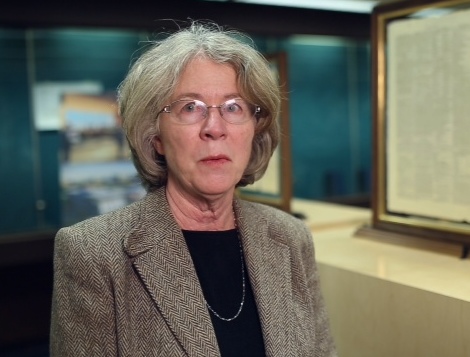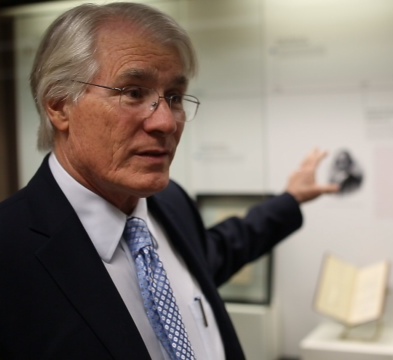The Bill of Rights — Past, Present and Future


Two hundred and twenty-five years ago, James Madison, statesman, political theorist and future fourth president of the United States, penned a series of amendments — 17 in all — designed to guarantee each citizen’s personal freedoms and to limit the power of government. Whittled down to 10, they eventually became the Bill of Rights.
An exhibition in the Special Collections department at the UC Santa Barbara Library offers a rare glimpse into the history of this important document. “The Emergence of the Bill of Rights” features a selection of books, documents and other artifacts that explore how the Bill of Rights came to be and how the principles contained therein represent Americans’ sensibilities regarding civil rights and liberties.
“It centers on an amazing collection of late 18th-century books and newspapers, all having to do with the concepts of liberties and rights as they were thought about during the American Revolution and Constitution-writing phase of our country’s history,” Patricia Cohen, professor of history at UCSB, said of the exhibition. A specialist in the period of the American Revolution, she curated the exhibition with UCSB English professor William Warner.
The crown jewel of the exhibition is an issue of The New-York Daily Gazette dated June 13, 1789. The only surviving version of Madison’s proposal, according to Cohen, it offers a glimpse into the freedom-centric foundation of the United States. “In that particular issue of the Gazette, Madison outlined his proposed 17 amendments to the United States Constitution,” she said. When finally ratified by both Houses of Congress as well as the individual states, 10 amendments remained.
Among the rare and valuable artifacts are pamphlets, broadsides, and an edition of “The Federalist Papers” in which the owner — in his own hand — attributed each individual essay to Madison or to founding father Alexander Hamilton. The whole of the exhibition highlights the ideas and challenges that, over several years of struggle, were distilled into the first 10 amendments of the U.S. Constitution.
One section of the exhibition features a timeline that begins with England’s Magna Carta, issued in 1215, and concludes with President Franklin D. Roosevelt signing legislation in 1941 — the 150th anniversary of the ratification of the Bill of Rights — that designated December 15 as national Bill of Rights Day.
From the Massachusetts Body of Liberties of 1641, which communicated 100 statements of individual rights, to England’s 1689 Parliamentary Bill of Rights, which formed a limited monarchy, the documents displayed exhibit “important antecedents that offered their own alternative definitions of individual rights,” said Cohen.
“The exhibition shows that although the first 10 amendments were considered important when they were ratified by the states in 1791, it was not until the 20th century that these amendments were conceptualized as the legal instruments which, taken together, constitute the Bill of Rights,” Warner said. A scholar of constitutional law, Warner has taught courses on First Amendment tradition. He is the author of “Protocols of Liberty — Communication Innovation & the American Revolution” (Chicago University Press, 2013).
“The Emergence of the Bill of Rights” was made possible by local philanthropist and businesswoman Sara Miller McCune, who lent items from her own collection. McCune is founder and executive chairman of SAGE, a leading international publisher of journals, books and electronic media for academic, educational, and professional markets.
“The artifacts in ‘The Emergence of the Bill of Rights’ represent moments of strength, sacrifice, compromise and triumph in the organization of the American Republic and the establishment of our civil liberties,” said McCune. “SAGE is proud to lend these important relics for display at UC Santa Barbara so that library patrons and other exhibit visitors can better appreciate the crucial decisions made at one of the most critical moments in our nation’s history.”
Cohen and Warner will give a talk on “The Emergence of the Bill of Rights” at 4 p.m. on Thursday, March 6. The event, which will take place in the Mary Cheadle Room at the UCSB Library, is free and open to the public.
The exhibition continues at the UCSB Library through May 8, after which time many of McCune’s rare items will travel to the National Constitution Center in Philadelphia.
The Special Collections department is open Monday, Thursday and Friday from 9 a.m. to 5 p.m., and Tuesday and Wednesday from 9 a.m. to 8 p.m. Admission is free.



